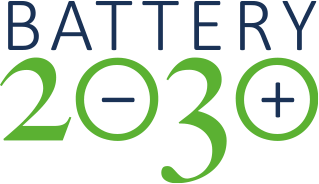Aims and goals
Despite decades of research, a persistent fundamental knowledge gap prevents batteries from fulfilling their potential, because the atomistic mechanisms of charge and ion transfer across interfaces in batteries remain largely unexplored by experimental techniques. When charges move, the local arrangement of atoms changes in response to the new electronic configuration. How these changes occur has a significant impact on how efficiently and how far the charges can move, yet the time and length scales are still poorly understood. Conventional experimental probes used in battery research cannot provide the needed ultrafast time and atomic length scale resolution, nor sensitivity to changes in electronic configuration around specific atomic species. Hence, it is currently challenging to unravel the dynamic rearrangement of atoms and ions which accompany electron transfer, and in turn govern the charge transfer processes.
UltraBat will close this knowledge gap by pushing further the latest development of ultra-bright and ultra-fast X-ray Free Electron Laser (XFEL) scattering and spectroscopy techniques together with visible ultrafast spectroscopy to study charge transfer between different redox centres in Li-rich layered intercalation compounds and at the solid/liquid interface. Advances in NMR spectroscopy will reveal local ordering and lithium interfacial dynamics on the nanometer scale. Coupled with predictions of experimental observables from a new framework for atomic-scale simulations of the electrochemical interface and transport mechanisms, we will reveal phenomena driving diffusion of ions in complex electrode materials. This will provide the insight required for transformational approaches to control the redox reactions (e.g. electron transfer) that are common to many energy-related processes, including batteries, photovoltaics, and water-splitting systems.
Contribution to the roadmap goals
The UltraBat project is centered around the Theme I of the BATTERY 2030+ roadmap “Accelerated discovery of battery interfaces and materials” and sub-theme “Battery Interface Genome (BIG)”. UltraBat will deliver a deeper understanding of the electron and ion transfer processes at the battery interface as well as new synergetic protocols to study the next generation batteries. Ultrabat will be integrated with other BATTERY 2030+, such as BIG-MAP, creating a unified data and protocols landscape to accelerate the battery discovery.
Objectives
- Develop a synergetic protocol, comprising spectroscopy and atomistic simulations, to understand ultrafast phenomena at the battery interface.
- Reveal the fundamental mechanisms for electronic and ionic transport through the solid/liquid battery interfaces.
- Contribute to unify the battery data landscape across Europe.
Project Coordinator: Professor Martin Meedom Nielsen, Danmarks tekniske Universitet (DTU), Denmark
Contact: mmee@fysik.dtu.dk


